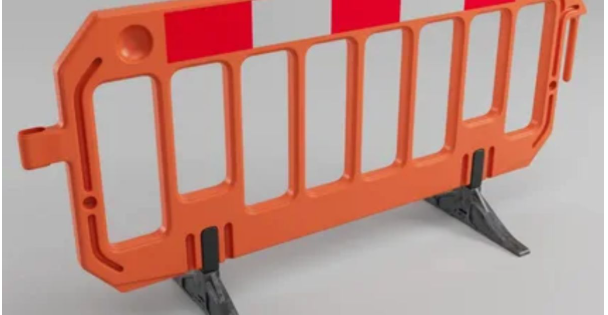Have you seen those bright orange barriers at roadworks or events keeping people safe? Those are Chapter 8 barriers built to UK standards to guide pedestrians and traffic. They are heavy-duty high-visibility installations intended to make accidents unnecessary and keep everybody on the move. Consider them to be trustworthy patrons of your site, who will prevent you from getting into trouble or facing legal consequences.
Imagine this: you’re on a busy site with traffic roaring and pedestrians everywhere. One mistake indicates an issue, but Chapter 8 barriers can take care of business. A good setup keeps everyone safe and your project on track. This article serves as your friendly guide to ace the installation, avoid pitfalls, and ensure top-notch safety.
We’ll guide you through a clear process to install these barriers. From choosing the right location to fixing them, we have advice to turn your site into a safety champion. We’ll also discuss common errors and explain why proper installation keeps you compliant and worry-free. Are you ready to jump in and make your project easy?
What Are Chapter 8 Barriers
Chapter 8 barriers are your best bet for keeping sites safe and following the law. They’re strong plastic or metal walls, bright orange or red, that meet strict UK standards for roadworks and events. These barriers are made to direct pedestrians and vehicles, and they’re built to be visible even at night. You can think of them as the backbone of your project’s safety and organisation.
These barriers aren’t just random fences. They can handle tough conditions like wind or crowds. You will find them in a construction place, festivals or even on a road repair so they can keep everybody in line. Site managers love them because they’re easy to spot, stack, and move.
- Reflective bands make them visible day and night for safety
- Tough materials resist weather and wear
- You can set them up fast and change their layout
- They meet UK Chapter 8 rules, so they’re legal to use
- You can stack them to save space and move them around
- They work well for roadworks, events, or pedestrian areas
Why Proper Installation Is Critical
Setting up Chapter 8 barriers has a huge impact on safety. A shaky or poorly placed barrier might allow people to wander into harm’s way or confuse drivers. Doing it right keeps everyone safe and your site running. It’s not just about looks – it’s about protecting lives.
Careless setups can get you in trouble with the authorities or, even worse, cause accidents. Proper installation means no gaps, no tipping over, and clear paths for everyone. It shows you take safety and keeps your project from expensive holdups. Believe us, getting this step right is worth the effort.
Step-by-Step Guide to Installing Chapter 8 Barriers
Setting up Chapter 8 barriers isn’t complex but you need some skills. This guide splits it into clear steps so your site stays safe and follows the rules. From planning to final checks we’ve got you covered for a smooth setup.
Think of this as your playbook for barrier success. Each step builds a safety fort, keeping people and workers safe. Ready to start? Here’s how to do it right.
Assess the Site
Start by checking your site. Walk around to find dangers like bumpy ground or busy traffic areas. Figure out where barriers should go to guide people and keep paths open. A solid plan now prevents problems later.
Choose the Right Barriers
Pick barriers that show they’re from Chapter 8 barriers. Go for ones you can see and that last, matching what your project needs now or later. Make sure they meet standards and have reflective parts to boost safety. Picking the right ones will give your project the right protection.
Set Up the Barriers
Now put those barriers where they need to be. Line them up as you planned, making sure the bases are secure so they don’t wobble. Join them to create a solid wall that guides cars and people. When you set them up well, everyone stays safe.
Test and Inspect
For the final step, give your setup a good look-over. Walk along the line to check for any that might cause problems. Don ‘t forget to ensure it’s all Chapter eight standards and is easy to see. Fix anything that’s off, and you’ll be ready to start.
Common Mistakes to Avoid
Someone messing up the Chapter 8 barrier setup can turn a safe site into a real headache. Not doing site checks or using low-quality barriers is just asking for trouble. It’s tempting to think any fence will do the trick as a quick path, but steer clear of these traps and keep your project running.
Another mistake is to hurry the work or disregard the rules. Unstable foundations or spaces in the barrier allow people to wander into array into risky areas. Give yourself time to do it and you’ll avoid accidents, penalties, and worry. Stay alert and your worksite stays protected.
Benefits of Correct Chapter 8 Barrier Installation
Getting your Chapter 8 barrier setup right gives your site a big safety boost. It protects workers and passers by from danger, helping everyone relax and stay safe. It also proves you follow the rules, which keeps you out of legal trouble. A job done well leads to a smoother, safer project.
Apart from safety, it’s about keeping operations smooth as silk. Placing barriers eliminates confusion, prevents holdups, and gives the site a professional appearance. Here are some benefits that come with doing it :
- A safer setting for workers, people on foot, and those behind the wheel
- Complete adherence to Chapter 8 rules
- Reduced drop in accidents and pricey interruptions
- Easy-to-follow directions for vehicle and pedestrian movement
- A polished look that enhances site trustworthiness
- Durable barriers that save money in the long run
Conclusion
Getting Chapter 8 barrier installation right is key to a safe and smooth project. Every step matters for keeping people safe, from choosing the right equipment to setting it up. It’s not just about following regulations; it’s about creating a site where everyone feels protected. Use these tips to make your interiors and make your next setup top for your next site.
So pick up your barriers, map out your site, and start with confidence. A bit of work now prevents big problems later, keeping your project on schedule and following the rules. You’ve got this, buddy. Put safety first and watch your site excel. Are you ready to set up those barriers like an expert?


